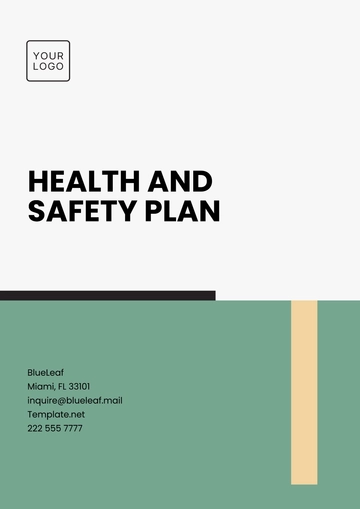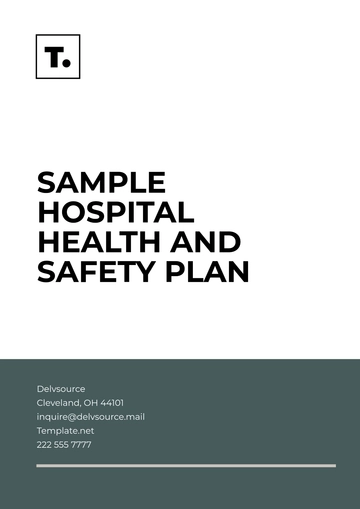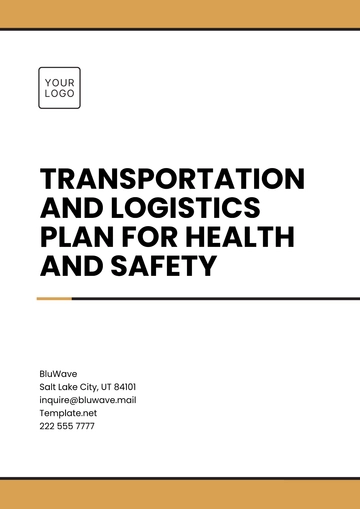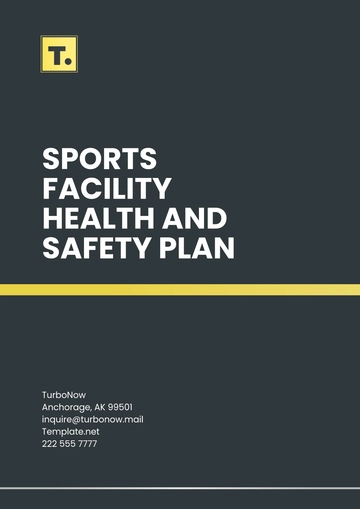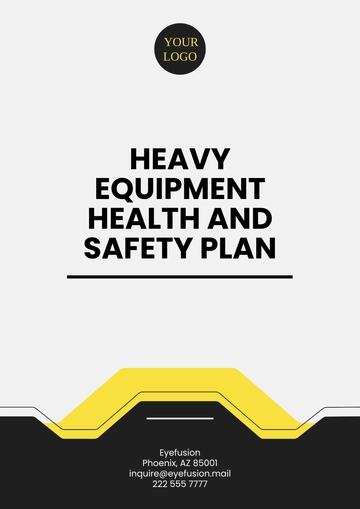Free Residential Construction Safety Plan

1. Introduction
The purpose of this Residential Construction Safety Plan is to outline the safety protocols and procedures designed to protect all personnel, visitors, and the public during the construction of residential projects. This plan aims to minimize accidents, injuries, and property damage while ensuring compliance with applicable safety regulations.
2. Project Overview
Project Name | Residential Home Construction |
Project Location | 123 Main Street, Anytown, USA |
Project Duration | January 1, 2055 – June 30, 2055 |
Prepared By | [Your Name] |
Date | September 26, 2054 |
3. Responsibilities
Project Manager: Ensure the implementation and compliance with the safety plan.
Site Supervisor: Oversee daily safety practices and conduct safety meetings.
Safety Officer: Monitor safety conditions, conduct inspections, and provide safety training.
Workers: Follow safety protocols and report any unsafe conditions or incidents immediately.
4. Hazard Identification and Risk Assessment
A thorough risk assessment has been conducted to identify potential hazards specific to this construction project. Common hazards include, but are not limited to:
Falls: From scaffolding, ladders, or uneven surfaces.
Electrical Risks: Exposed wires, faulty equipment, and improper grounding.
Material Handling: Lifting heavy materials and using power tools.
Site Conditions: Slips, trips, and falls due to debris or weather conditions.
4.1 Risk Mitigation Strategies
Conduct regular inspections to identify and address hazards promptly.
Use appropriate PPE, such as hard hats, safety glasses, gloves, and fall protection systems.
Implement fall protection systems, including guardrails and harnesses, where necessary.
5. Safety Protocols
5.1 Personal Protective Equipment (PPE)
All workers must wear the following PPE:
Hard hats
Safety goggles
High-visibility vests
Steel-toed boots
Gloves
5.2 Machinery and Equipment Safety
Only trained personnel may operate machinery and tools.
Regular inspections and maintenance of equipment are mandatory.
Lockout/tagout procedures must be followed during maintenance.
5.3 Safe Work Practices
Follow proper lifting techniques to avoid injuries.
Maintain clear pathways to prevent slips and trips.
Store materials safely to prevent falling hazards.
6. Training Requirements
All personnel involved in the project must undergo safety training, which includes:
Orientation on the Residential Construction Safety Plan.
Training on the use of PPE.
Emergency response training.
Equipment operation training.
Training records will be maintained and reviewed regularly.
7. Emergency Procedures
In the event of an emergency, follow these procedures:
Type of Emergency | Procedure |
|---|---|
Medical Emergencies |
|
Fire Emergencies |
|
Severe Weather |
|
8. Communication and Reporting
8.1 Safety Meetings
Weekly safety meetings will be conducted to discuss safety concerns and updates.
Minutes of the meetings will be recorded and distributed to all personnel.
8.2 Reporting Incidents
All incidents, near misses, and unsafe conditions must be reported immediately to the site supervisor. An incident report form will be filled out and submitted for review.
9. Plan Review and Updates
This safety plan will be reviewed and updated regularly to ensure its effectiveness and relevance to the project. Any changes in project scope, site conditions, or regulations will prompt an immediate review of this plan.
10. Conclusion
The successful implementation of the Residential Construction Safety Plan is essential for ensuring the safety of all personnel involved in the project. By adhering to the outlined protocols and fostering a culture of safety, we can minimize risks and create a secure working environment. Continuous monitoring, training, and communication will help us maintain high safety standards throughout the construction process. All personnel are encouraged to take an active role in promoting safety and reporting any concerns to ensure the well-being of everyone on site.
- 100% Customizable, free editor
- Access 1 Million+ Templates, photo’s & graphics
- Download or share as a template
- Click and replace photos, graphics, text, backgrounds
- Resize, crop, AI write & more
- Access advanced editor
Enhance your project’s safety with the Residential Construction Safety Plan Template from Template.net. This editable and customizable template allows you to tailor safety protocols to fit your unique residential construction needs. With clear guidelines and an organized layout, you can easily implement essential safety measures, ensuring compliance and protecting your team. Streamline your safety planning process today with this versatile tool designed for residential construction projects!
You may also like
- Finance Plan
- Construction Plan
- Sales Plan
- Development Plan
- Career Plan
- Budget Plan
- HR Plan
- Education Plan
- Transition Plan
- Work Plan
- Training Plan
- Communication Plan
- Operation Plan
- Health And Safety Plan
- Strategy Plan
- Professional Development Plan
- Advertising Plan
- Risk Management Plan
- Restaurant Plan
- School Plan
- Nursing Home Patient Care Plan
- Nursing Care Plan
- Plan Event
- Startup Plan
- Social Media Plan
- Staffing Plan
- Annual Plan
- Content Plan
- Payment Plan
- Implementation Plan
- Hotel Plan
- Workout Plan
- Accounting Plan
- Campaign Plan
- Essay Plan
- 30 60 90 Day Plan
- Research Plan
- Recruitment Plan
- 90 Day Plan
- Quarterly Plan
- Emergency Plan
- 5 Year Plan
- Gym Plan
- Personal Plan
- IT and Software Plan
- Treatment Plan
- Real Estate Plan
- Law Firm Plan
- Healthcare Plan
- Improvement Plan
- Media Plan
- 5 Year Business Plan
- Learning Plan
- Marketing Campaign Plan
- Travel Agency Plan
- Cleaning Services Plan
- Interior Design Plan
- Performance Plan
- PR Plan
- Birth Plan
- Life Plan
- SEO Plan
- Disaster Recovery Plan
- Continuity Plan
- Launch Plan
- Legal Plan
- Behavior Plan
- Performance Improvement Plan
- Salon Plan
- Security Plan
- Security Management Plan
- Employee Development Plan
- Quality Plan
- Service Improvement Plan
- Growth Plan
- Incident Response Plan
- Basketball Plan
- Emergency Action Plan
- Product Launch Plan
- Spa Plan
- Employee Training Plan
- Data Analysis Plan
- Employee Action Plan
- Territory Plan
- Audit Plan
- Classroom Plan
- Activity Plan
- Parenting Plan
- Care Plan
- Project Execution Plan
- Exercise Plan
- Internship Plan
- Software Development Plan
- Continuous Improvement Plan
- Leave Plan
- 90 Day Sales Plan
- Advertising Agency Plan
- Employee Transition Plan
- Smart Action Plan
- Workplace Safety Plan
- Behavior Change Plan
- Contingency Plan
- Continuity of Operations Plan
- Health Plan
- Quality Control Plan
- Self Plan
- Sports Development Plan
- Change Management Plan
- Ecommerce Plan
- Personal Financial Plan
- Process Improvement Plan
- 30-60-90 Day Sales Plan
- Crisis Management Plan
- Engagement Plan
- Execution Plan
- Pandemic Plan
- Quality Assurance Plan
- Service Continuity Plan
- Agile Project Plan
- Fundraising Plan
- Job Transition Plan
- Asset Maintenance Plan
- Maintenance Plan
- Software Test Plan
- Staff Training and Development Plan
- 3 Year Plan
- Brand Activation Plan
- Release Plan
- Resource Plan
- Risk Mitigation Plan
- Teacher Plan
- 30 60 90 Day Plan for New Manager
- Food Safety Plan
- Food Truck Plan
- Hiring Plan
- Quality Management Plan
- Wellness Plan
- Behavior Intervention Plan
- Bonus Plan
- Investment Plan
- Maternity Leave Plan
- Pandemic Response Plan
- Succession Planning
- Coaching Plan
- Configuration Management Plan
- Remote Work Plan
- Self Care Plan
- Teaching Plan
- 100-Day Plan
- HACCP Plan
- Student Plan
- Sustainability Plan
- 30 60 90 Day Plan for Interview
- Access Plan
- Site Specific Safety Plan
